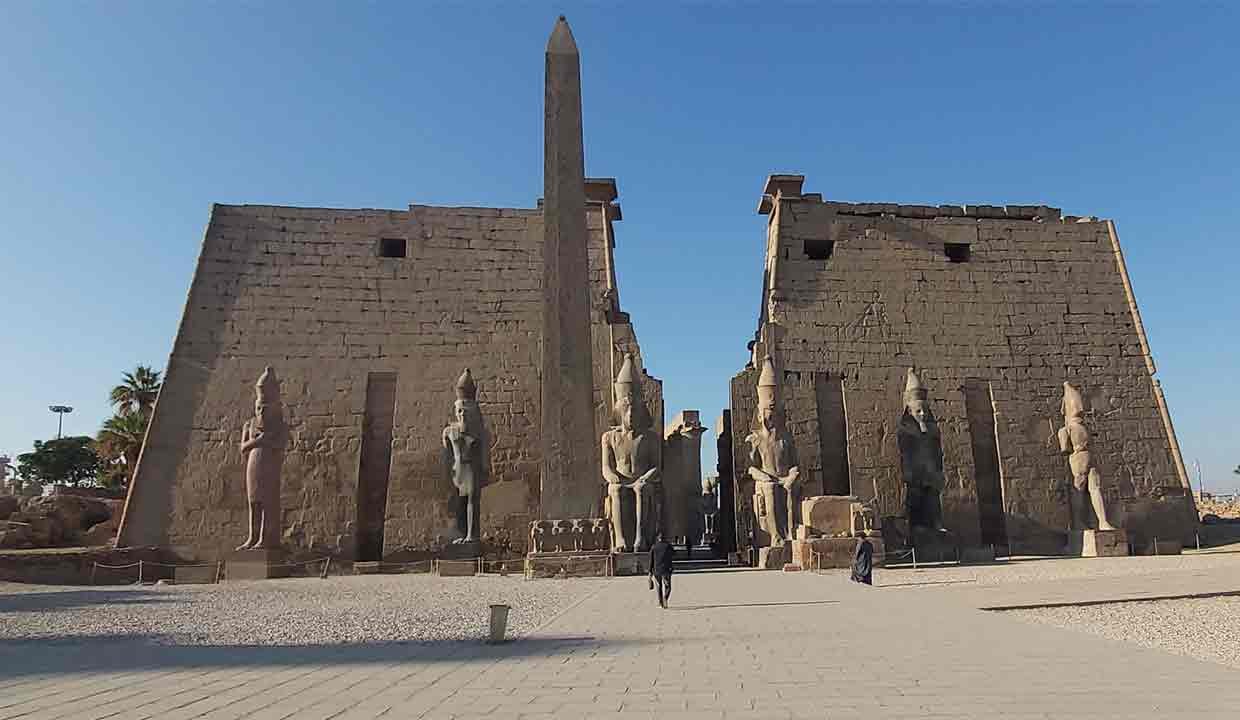The Luxor Temple, located on the east bank of the Nile River in the ancient city of Thebes (modern-day Luxor), stands as one of Egypt’s most remarkable architectural feats. Built during the New Kingdom period, this temple was originally commissioned by Pharaoh Amenhotep III and later expanded by Ramses II. It is a site that not only celebrates the pharaohs’ power but also the deep connection between kingship and divinity.
Historical Significance of the Luxor Temple
Unlike many other Egyptian temples dedicated to specific gods or rulers, the Luxor Temple was constructed to honor the concept of divine kingship. It was central to the annual Opet Festival, one of the most important religious celebrations in ancient Egypt. During this festival, the statues of the god Amun, his consort Mut, and their son Khonsu were transferred from the nearby Karnak Temple to Luxor Temple to renew the pharaoh’s divine right to rule. This emphasis on the renewal of kingship illustrates the temple’s primary role in connecting the pharaohs with the gods.

Symbolism in Architecture:
The layout and design of Luxor Temple symbolized the pharaoh’s journey from mortality to divinity. The temple complex was not only a place of worship but also a grand statement of the pharaoh’s legitimacy as a god-king on Earth. Each structure within the temple served a purpose in this spiritual journey, from the pylon entrance to the inner sanctum where the gods’ statues were kept.
Architectural Grandeur and Design
The Entrance Pylon:
The massive pylon at the entrance, constructed by Ramses II, immediately captures the attention of visitors. It is adorned with carvings that depict Ramses’ military victories, particularly his triumph at the Battle of Kadesh. This grandiose display of power served to immortalize the pharaoh’s strength and divine right to lead.

Guarding the entrance are two enormous seated statues of Ramses II, standing as sentinels to the temple’s spiritual and political significance. At its height, two towering obelisks flanked the entrance, although today, only one remains, with the other now located in the Place de la Concorde in Paris.
The Courtyard and Colonnaded Hall:
Beyond the pylon lies an expansive open courtyard, a space where worshippers and officials gathered for ceremonies and festivals. The courtyard leads to the colonnaded hall, one of the most architecturally impressive parts of the temple. The hall, lined with 14 colossal columns, is a masterpiece of New Kingdom design. These towering columns are adorned with intricate carvings, hieroglyphs, and depictions of the pharaohs paying homage to the gods, emphasizing the religious devotion that permeated the construction of the temple.
Intricate Carvings and Inscriptions:
The walls and columns throughout Luxor Temple are etched with detailed reliefs, showing the pharaohs in scenes of worship, military conquest, and divine interactions. These inscriptions not only provide valuable historical information but also reflect the pharaohs’ efforts to immortalize their deeds for future generations. The carvings of Amenhotep III and Ramses II particularly highlight their roles in expanding and beautifying the temple, cementing their legacies as powerful rulers.

Preservation and Modern Importance
Over the centuries, Luxor Temple was partially buried under sand and debris, but modern excavations have revealed much of its former glory. Today, the temple is a UNESCO World Heritage site and draws millions of visitors each year who come to witness its grandeur and historical importance. The preservation efforts have ensured that the temple remains an enduring symbol of ancient Egypt’s power and architectural prowess.

The temple’s location in the heart of modern Luxor makes it a focal point of Egypt’s cultural heritage. Its grandeur continues to inspire awe, bridging the gap between the ancient and modern worlds and offering a tangible connection to the past.
Conclusion: A Monument to Kingship and Divinity
The Luxor Temple is more than just a historical landmark; it is a profound testament to the religious and political ideologies of ancient Egypt. Its design, scale, and intricate artistry all serve to highlight the immense power and devotion of the pharaohs who ruled during the New Kingdom. As visitors walk through the temple today, they are not only exploring an architectural masterpiece but also stepping into a sacred space that once celebrated the divine nature of kingship in ancient Egypt.
The Luxor Temple remains a living legacy of Egypt’s ancient civilization, offering a timeless connection to its history, beliefs, and artistic achievements.

